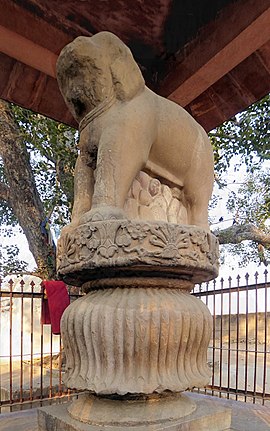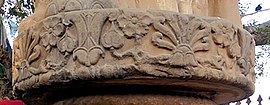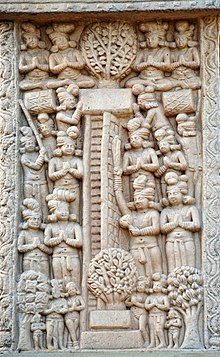Sankisa | |
 Elephant capital at Sankissa, one of the Pillars of Ashoka, 3rd century BCE  Detail of the abacus. | |
| Location | Farrukhabad district, Uttar Pradesh, India. |
|---|---|
| Coordinates | 27°20′02″N 79°16′16″E / 27.33389°N 79.27111°E |
| Type | Settlement |
| Pilgrimage to |
| Buddha's Holy Sites |
|---|
 |
Sankissa (also Sankasia, Sankassa and Sankasya) was an ancient city in India. The city came into prominence at the time of Gautama Buddha. According to a Buddhist source, it was thirty leagues from Savatthi.[1] After the Gautama Buddha's Mahaparinirvana (death) king Ashoka developed this place and installed one of his Pillars of Ashoka in the city, of which the elephant capital survives. He also built a stupa and a temple commemorating the visit of the Buddha. The ruins of the stupa are also present as a temple of Vishari Devi.

It has ruins of old monasteries and Buddhist monuments. The Briton Alexander Cunningham discovered the place in 1842.
Sankissa is now identified with Sankisa Basantapura on the north bank of the Ikkhumati river (Kalinadi), between Kampil and Kannauj, twenty-three miles west of Fatehgarh, twenty-five south of Kaimganj and forty-five north of Kannauj, in Farrukhabad district of Uttar Pradesh state of India.

